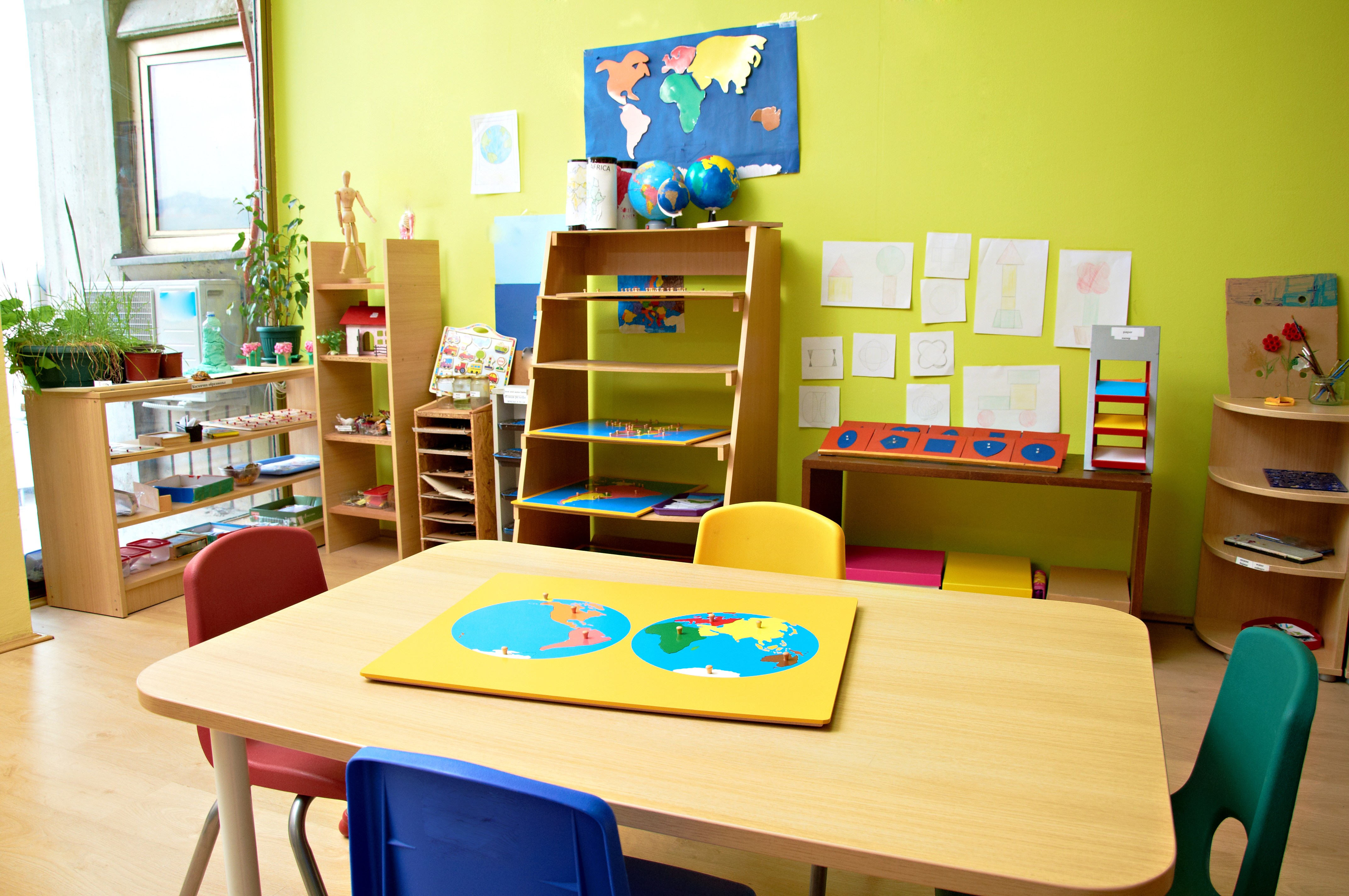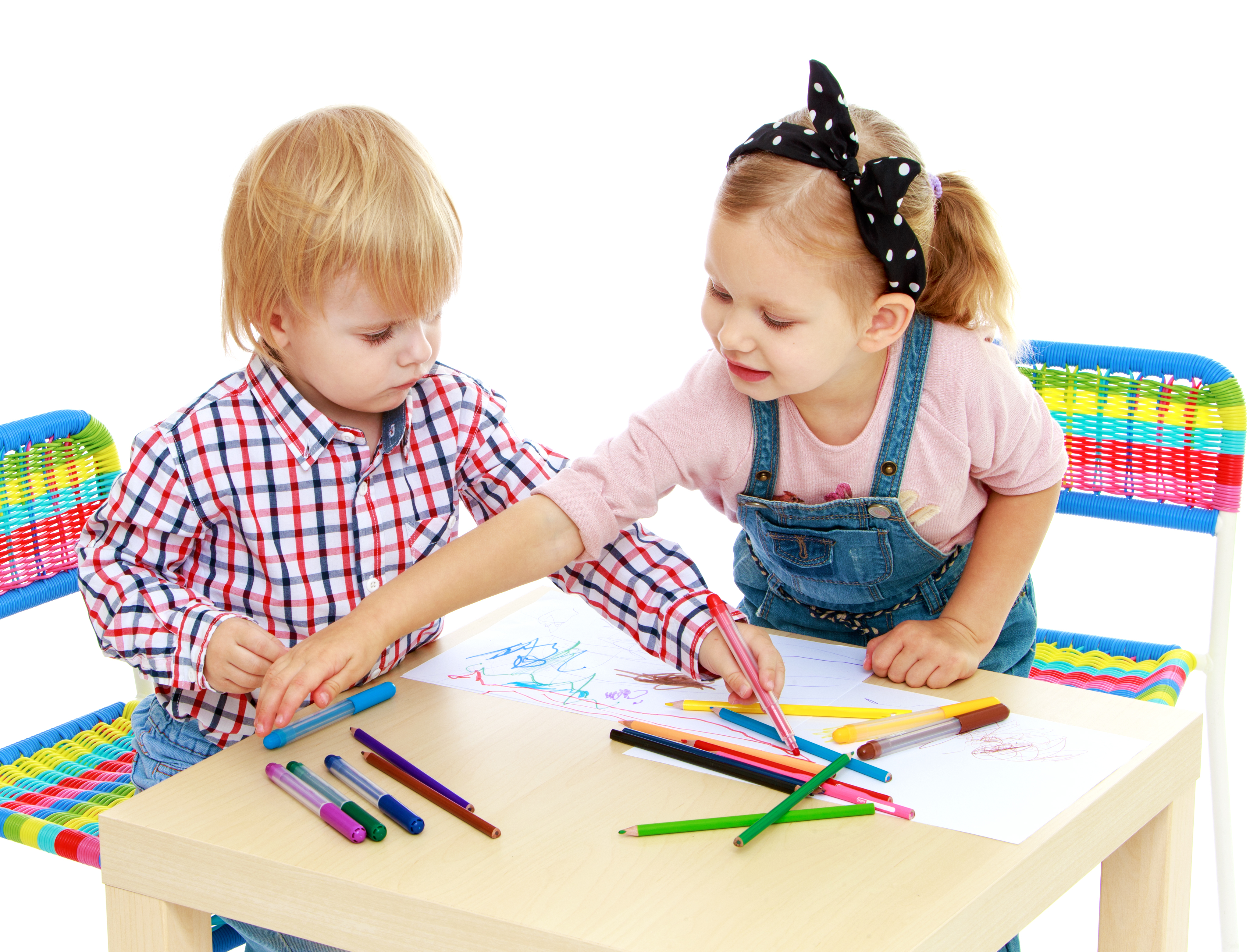 We believe children learn best when every aspect of their development — cognitive, physical, social, and emotional — is nurtured. Our Whole Child Education – based on the Montessori Method – focuses on early literacy, logical thinking, problem solving, social understanding, physical coordination, creativity, and positive character traits, such as cooperation and self-control. Whole Child Education allows your child to develop the critical-thinking skills and intellectual curiosity that creates good citizens and fuels success in the classroom and beyond.
We believe children learn best when every aspect of their development — cognitive, physical, social, and emotional — is nurtured. Our Whole Child Education – based on the Montessori Method – focuses on early literacy, logical thinking, problem solving, social understanding, physical coordination, creativity, and positive character traits, such as cooperation and self-control. Whole Child Education allows your child to develop the critical-thinking skills and intellectual curiosity that creates good citizens and fuels success in the classroom and beyond.
2. Why Do Montessori Classes Group Different Age Levels Together?
 Unlike traditional schools, children in a Montessori school are grouped in age groups spanning 2 to 3 years. This approach creates mentoring opportunities for older children and helps ensure that everyone in the class teaches one another, making learning a more interactive process. It also helps build social skills and challenge students to learn and work together.
Unlike traditional schools, children in a Montessori school are grouped in age groups spanning 2 to 3 years. This approach creates mentoring opportunities for older children and helps ensure that everyone in the class teaches one another, making learning a more interactive process. It also helps build social skills and challenge students to learn and work together.
- Children learn from one another-they learn by observing and interacting.
- The multi-age classroom offers each child a chance to be a leader. Unlike traditional education, where leadership is often based on an outgoing personality, the leaders of the classroom at The Seedlings Montessori School are the older children. Every child, whether outgoing or shy, is given the opportunity to lead. This is a wonderful experience that will serve your child the rest of his or her life.
- Young children learn higher level cognitive and social skills not only through mental development, but also by observing others as models.
- Collaborative learning is encouraged. The older children in classroom are encouraged to give lessons to younger children and it’s amazing to watch the older child solidify what they know by teaching it to the younger child and it’s just as amazing to see a young child’s eyes focus intently on the older child as they give a lesson-this is more powerful than an adult giving a lesson. They connect more deeply with other children.
- Multi-age grouping helps children develop a sense of community and supports social development. Children in this environment learn to respect others as individuals. We don’t all have to be ‘the same’ or it doesn’t have to be ‘fair and equal’ when all children are being respected for who they are.
- Children work at their own levels, which may vary in different curriculum areas. Groups are flexible and often differ depending on interest, subject matter, and/or ability.
- Curriculum and materials are multidimensional and concrete. Children re-explore the same materials at different levels. For example, the geometric solids can first be sensorially explored by a younger child. An older child may want to name them, match them to cards, or even trace and cut them out. When these materials are used often and at different levels, the opportunities for learning are endless.
- Children who are given the freedom to interact with children of different ages build a sense of confidence that provides a foundation; which helps them move through life with the belief that they can try new things, and not be afraid of stepping out of their comfort zone.
Montessori philosophy supports multi-age grouping and Montessori teachers have implemented it for over 100 years. This concept has recently moved into the mainstream due to the work of many educational theorists and researchers. Some states are now recommending their preschools and elementary classrooms implement multi-age grouping.
3.The Montessori Difference
Here are some things you can expect from a Montessori versus a traditional approach.
|
MONTESSORI METHOD |
TRADITIONAL APPROACH Daycare |
|
Emphasis on cognitive and social development |
Emphasis on social development |
|
Teacher has unobtrusive role in classroom |
Teacher is center of classroom as “controller” |
| Environment and method encourage self-discipline |
Teacher enforces discipline |
|
Mainly individual instruction |
Group and individual instruction |
| Mixed age grouping |
Same age grouping |
|
Grouping encourages children to teach and help each other |
Most teaching done by teacher |
| Child chooses own work |
Activities structured for child |
|
Child works as long as he wishes on chosen project |
Child generally allotted specific time for work |
| Child discovers own concepts from self-teaching materials |
Child is guided to concepts by teacher |
|
Child sets own learning pace |
Instruction pace usually set by group |
| Child spots own errors from feedback on material |
If work is corrected, errors usually pointed out by teacher |
|
Child reinforces learning by repetition and feelings of success |
Learning is reinforced externally by repetition and rewards |
| Organized program for learning care of self and environment |
Less emphasis on self-care instruction |
|
Child can work where he chooses (yet not disturb work of others); group work is also encouraged |
Child usually assigned own chair; encouraged to parti cipate, sit still and listen during group sessions |























